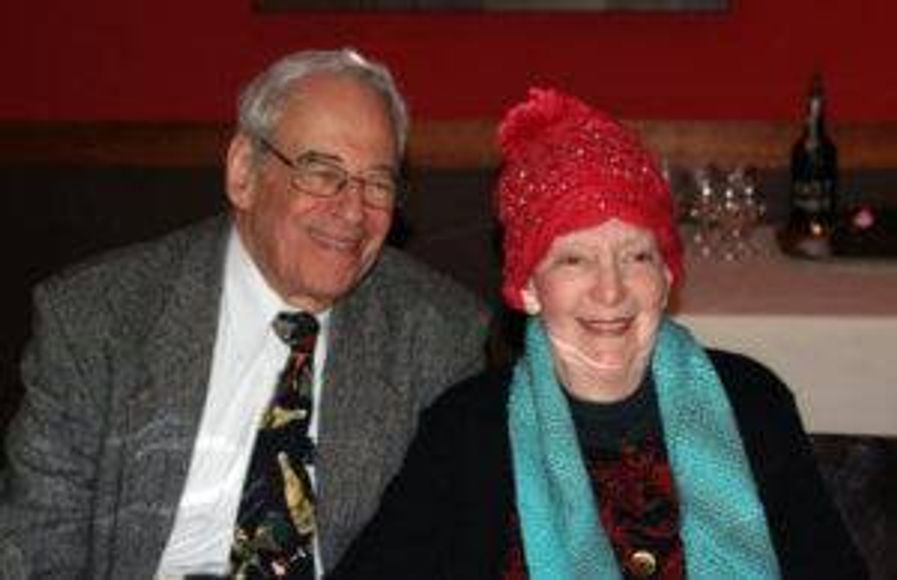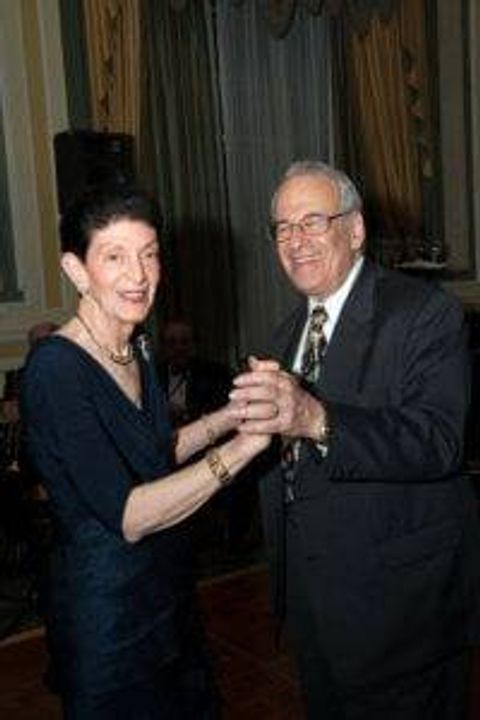Doulas Who Cradle the Dying
Usually associated with birth, they now help families make the journey to life's end
(This article appeared previously on Kaiser Health News.)

As Ellen Gutenstein lay in her bed at home, dying from lung cancer that had metastasized in her brain, a heart-wrenching Mother’s Day card arrived from her granddaughter. Neither Ellen’s daughter — nor her husband — felt they could read it to her without breaking down.
Fortunately, a volunteer from the local hospice’s doula program was on hand to help the then-77-year-old resident of Ridgewood, N.J., comfortably die at home. She picked up the letter and read it with compassion.
“I’m not sure I could have done that,” said Lisa Silvershein, the daughter who helped arrange a more comfortable end-of-life experience for her mom in 2014. “The doula not only made my mom’s life easier — she made our lives easier, too.”
Doulas, an ancient Greek term that loosely means a woman helping another woman, have long comforted women during birthing. But the definition has broadened, and doula programs — a combination of male and female volunteers and paid certified staff — are increasingly helping elderly patients fulfill wishes to die at home rather than in hospitals or nursing homes.
Doulas Come Full Circle, From Birth to Death
End-of-life doula specialists are now in at least a half-dozen states, including New York, Colorado and Texas, said Henry Fersko-Weiss, executive director of the International End of Life Doula Association, which he co-founded in 2015. A social worker with hospice experience, he first came across the idea 15 years ago, when a birth doula told him that she was also offering comfort to the dying.
“I thought to myself: Oh my God, this is exactly what we should be doing at end of life,” said Fersko-Weiss, who has since authored a book, Caring for the Dying: The Doula Approach to a Meaningful Death.
In 2003, he set up what he says was the nation’s first end-of-life doula company to train people to care for the dying. Fersko-Weiss helped create the doula program at Valley Home Care in Paramus, N.J., which assisted the Gutenstein family.
The doula association trains and certifies professional end-of-life doulas. Certification requires 22 hours of classes that cost about $600 for those who hope to make a career of it. Volunteer doulas complete 18 hours of training, with costs typically paid by a sponsoring hospital or hospice.
A Proactive Step for Families
“Nobody should die alone,” said Ellen Rand, a longtime hospice volunteer, blogger and health journalist. Finding a doula is a proactive step for families facing terminal illnesses. “I’ve never come across anyone who has done too much end-of-life planning — it’s usually just the opposite,” she said.
The end-of-life doula movement is supported by the National Hospice and Palliative Care Organization. “As long as they go through a training process, I think they can complement the work of the hospice team really well,” said John Mastrojohn III, the organization’s executive vice president. “The more people there to help a patient and family, the better.”
While most hospice workers focus on the physical needs of the dying, doulas offer emotional and spiritual support. They often help the dying reflect on life’s meaning. They conduct comforting rituals, including light touch and holding hands. They will read to patients or play favorite music. Doulas also explain signs and symptoms of dying to the family and help them know what’s coming next.
“We work as a team with doulas,” says Bonnie Schneider, manager of social services at Valley Home Care, part of the Valley Health System, which oversaw Gutenstein’s care. Its volunteer doulas must be trained, go through criminal background checks and health screenings and offer three written references.
Planning for a Vigil

Shortly after Gutenstein, then a Valley Hospice volunteer, was diagnosed with incurable cancer, the hospice connected her with Fersko-Weiss.
“To be honest, we weren’t sure if an end-of-life doula would work for us,” said Silvershein. “But we finally decided, what the heck, let’s give it a shot.”
It turned out to be just what the family needed. In her final days, approximately eight doula volunteers assisted Gutenstein and her family, with one always by her side.
“They ended up making our lives easier — and hers,” said Gutenstein’s husband, Bob. “All along, the doulas helped us to know what to expect next — which is something most of us didn’t know.”
This included planning for Gutenstein’s final days, which the doula association refers to as “the vigil.” The doulas helped create a “vigil plan,” which detailed who should be in the room at her death and the sounds and smells she wanted around her.
Early on, Gutenstein’s volunteer doulas recommended that the family assemble a memory book. “My mom loved the idea,” recalled Silvershein. The book featured photos, letters, writings and illustrations. The doulas frequently read the memory book to Ellen because they saw how happy it made her.
When family needed time away from Ellen’s bedside, the doulas frequently talked, read or sang to her. One doula sang Ellen’s favorite song: Over the Rainbow.
Giving Emotional and Spiritual Care
There are things end-of-life doulas can’t do — at least in most hospital or hospice settings. Because they aren’t nurses, they aren’t typically permitted to physically care for patients — whether it’s changing bandages or giving them medications. But in private homes, doulas and families agree on acceptable tasks, said Fersko-Weiss.
They can do light massage, or they might brush teeth and help a primary caregiver change a patient’s clothes and bedding, said Fersko-Weiss. Doulas also can help caregivers reposition someone in bed or apply cold compresses if fever spikes.
Unlike home health aides, end-of-life doulas are trained in emotional and spiritual care — not just physical care, said Fersko-Weiss.
Perhaps the most important thing doulas did for the Gutensteins was to constantly make everyone in the room — particularly Ellen — more comfortable. “It was the doula who kept her positive,” said Bob Gutenstein.
Doulas give family members time to sleep, which can improve their decision-making. “The last few days, the doulas were there around the clock, which was really helpful for me,” said Silvershein.
Both Volunteers and Paid Professionals

The best way to find a volunteer end-of-life doula is via a patient’s local hospital or hospice, said Fersko-Weiss. But volunteers typically have limited availability.
To find paid doulas, his association intends to post a list on its website with contact information for member doulas across the country. Until then, Fersko-Weiss suggested directly contacting his group’s website at inelda.org.
Trained and certified non-volunteer doulas cost $40 to $100 per hour, Fersko-Weiss said. Some charge flat rates for initial visits and during a dying patient’s final days, when round-the-clock vigilance is often needed. Costs for that end-stage service typically range from $1,200 to $4,000, he said.
At the moment, medical insurance does not cover paid doula services, said Fersko-Weiss. But just as some insurance companies are starting to offer partial reimbursements for birth doulas, he predicts that families may eventually receive some reimbursements for end-of-life doulas.
Gutenstein’s doulas were volunteers, and the family later showed its thanks by giving a substantial donation to the hospital’s doula unit.
Knowing what they know now, said Bob Gutenstein, they would have happily paid for the services if volunteers were not available. It was, after all, the doulas who recognized and alerted both Lisa and Bob that Ellen’s death was imminent.
“We wouldn’t have had this confirmation without them,” Silvershein said.
It gave Bob — who had been dozing at his wife’s bedside — his final moments with his wife, which he might have otherwise missed. After the doula alerted him to Ellen’s last breaths, “I reached over, and she gave me a squeeze,” said Bob, “and then, she was gone.”
KHN’s coverage of end-of-life and serious illness issues is supported by The Gordon and Betty Moore Foundation and coverage related to aging & improving care of older adults is supported by The John A. Hartford Foundation.
Next Avenue Editors Also Recommend:


